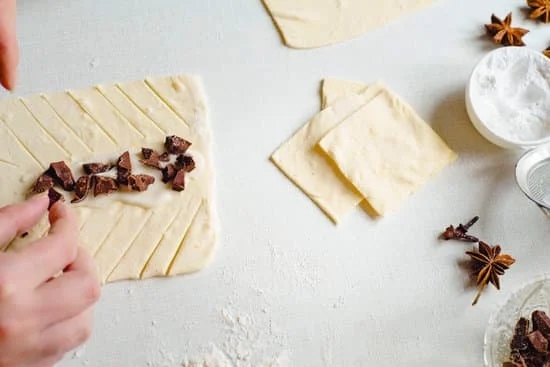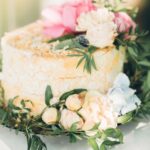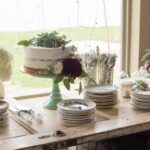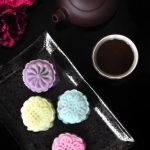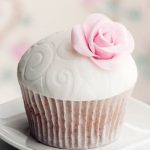Decorating a cake is more than just adding a few embellishments – it’s an art form that can elevate a simple cake into a stunning masterpiece. But knowing how to stick decorations on a cake is crucial to ensure they stay put and look as beautiful as intended. Whether it’s for a special occasion or just to satisfy your creative cravings, mastering the art of cake decoration can truly make your baked creations stand out.
The right decorations can transform a plain cake into a work of art, adding color, texture, and personality. From intricate fondant designs to delicate edible flowers or even simple chocolate shavings, the options are endless when it comes to decorating cakes. Understanding the various types of edible decorations available and how to effectively apply them can take your cake decorating skills to the next level.
In addition to edible decorations, non-edible items like ribbons, candles, and plastic figurines also play a crucial role in enhancing the overall look of a cake. Knowing how to incorporate these elements without compromising taste or presentation is essential for creating visually appealing cakes. By selecting the appropriate adhesive and following proper techniques for sticking decorations on cakes, you can ensure that your creations not only look good but also taste delicious.
Types of Edible Decorations
When it comes to decorating a cake, edible decorations play a significant role in enhancing the overall look and appeal of the sweet treat. Edible decorations not only add flavor but also provide a visually pleasing element that can make any cake stand out. From intricate fondant designs to delicate edible flowers and indulgent chocolate shavings, the possibilities are endless when it comes to adorning your cake with edible embellishments.
Here are some popular types of edible decorations that you can use to elevate the appearance of your cakes:
- Fondant: Fondant is a versatile sugar paste that can be rolled out and molded into various shapes and designs. It is perfect for creating smooth finishes, sculpted figures, and intricate details on cakes.
- Edible Flowers: Edible flowers are not only beautiful but also add a touch of elegance to any cake. You can use fresh or dried edible flowers like roses, lavender, or pansies to create stunning floral arrangements on your cakes.
- Chocolate Shavings: Chocolate shavings are an easy way to add a touch of decadence to your cakes. Whether dark, milk, or white chocolate, shavings can be sprinkled over the top of the cake or used to coat the sides for a luxurious finish.
These edible decorations not only allow you to get creative with your cake designs but also provide delicious additions that will delight both the eyes and taste buds of those enjoying your culinary creations.
Non-Edible Decorations
Selecting Non-Edible Decorations
When choosing non-edible decorations for your cake, it is crucial to consider the theme or occasion for which the cake is being made. For example, if you are creating a birthday cake for a child, colorful plastic figurines or themed candles can bring the cake to life.
On the other hand, elegant ribbons or metallic accents may be more suitable for a wedding or anniversary cake. Selecting decorations that complement the overall design of the cake will ensure a cohesive and visually appealing finished product.
Sticking Non-Edible Decorations on Cake
Unlike edible decorations that can often be attached directly to the frosting or icing on a cake, non-edible decorations may require additional adhesive to stick securely. The key is to use an appropriate adhesive that will hold the decorations in place without damaging the cake or affecting its taste.
Edible glue or royal icing are excellent options for attaching non-edible decorations to cakes as they are safe for consumption and provide strong adhesion. It is essential to apply just enough adhesive to secure the decorations without causing any excess drips or smudges on the surface of the cake.
Tips for Creative Placement
To make your non-edible decorations stand out and create a visually striking design, consider using different heights and angles when placing them on the cake. For example, grouping candles of varying heights together or draping ribbons in cascading patterns can add dimension and interest to your decoration placement.
Additionally, mixing textures and colors can create a dynamic visual impact on the cake. Experiment with different arrangements before committing to a final design to achieve an eye-catching finish that will impress your guests.
Selecting the Right Adhesive
When it comes to decorating a cake, selecting the right adhesive is crucial to ensure that your decorations stay in place and create a stunning finished product. There are several options available for sticking decorations on cakes, with two popular choices being edible glue and royal icing.
Edible glue is a versatile option that is specifically designed for use with edible decorations on cakes. It provides a strong hold while also being safe for consumption. Edible glue is often used with delicate decorations such as fondant or sugar paste flowers.
On the other hand, royal icing is a traditional choice that can be used both as an adhesive and for intricate piping work on cakes. It dries hard and creates a firm bond, making it ideal for securing heavier decorations.
When deciding between edible glue and royal icing, consider the type of decoration you will be using and the desired effect. Edible glue is great for lightweight decorations that need a subtle finish, while royal icing works well for more elaborate designs that require a sturdier bond. Experimenting with both options can help you determine which adhesive best suits your decorating needs.
In addition to edible glue and royal icing, there are other adhesives such as buttercream frosting or simple syrup that can also be used to stick decorations on cakes. Each adhesive has its own unique properties and strengths, so it’s important to test them out to see which one works best for your particular project.
By choosing the right adhesive, you can ensure that your cake decorations not only look beautiful but also stay securely in place throughout your event.
| Adhesive Type | Best Used For |
|---|---|
| Edible Glue | Delicate fondant or sugar paste decorations |
| Royal Icing | Elaborate designs requiring a firm bond |
| Buttercream Frosting | Lightweight or temporary decorations |
Preparing the Cake Surface
Decorating a cake is not only about the types of decorations you choose but also about how well they are applied to the cake. Properly preparing the cake surface before sticking decorations is crucial to ensure that they adhere securely and stay put throughout the celebration. Here are some steps on how to prepare the cake surface effectively:
- Clean the Surface: Before applying any decorations, make sure the surface of the cake is clean and free from crumbs or debris. You can use a pastry brush or a clean kitchen towel to gently brush off any loose particles.
- Smooth Icing: If your cake has icing, be sure that it is smooth and even. You can use a palette knife or an icing smoother to achieve a flawless finish. This will provide a flat surface for the decorations to stick onto.
- Chill the Cake: For better adherence of decorations, it’s recommended to chill the cake in the refrigerator for a short period before applying them. This helps firm up the icing or frosting, making it easier for decorations to stick without sliding off.
By following these steps, you can ensure that your cake is properly prepared for decoration, allowing your chosen adornments to stay in place and create a visually stunning presentation. Now that you have prepared your cake surface accordingly, you can move on to sticking your desired decorations securely using suitable adhesives and techniques.
Remember that taking time to prepare your cake properly will make all the difference in achieving professional-looking and beautifully decorated cakes for any special occasion. Whether you are using edible decorations like fondant or non-edible embellishments such as ribbons, ensuring that they are stuck on securely will elevate the overall appearance of your creation.
Techniques for Sticking Decorations
Decorating a cake can truly elevate its appearance and make it a centerpiece of any celebration. Whether you are using edible decorations like fondant or non-edible items such as ribbons, knowing how to stick decorations on a cake is crucial in achieving a visually appealing result. In this section, we will delve into the various techniques you can use to ensure that your decorations stay put and create a stunning masterpiece.
One key technique for sticking decorations on cakes is piping. Piping involves using royal icing or buttercream to create intricate designs, attach flowers, or write messages on the cake. By using a piping bag with a small tip, you can have better control over the application of the icing and securely attach decorations to the cake’s surface. This method works well for delicate embellishments that need precision and stability.
Another effective technique is pressing the decorations onto the cake gently. This method is particularly useful when working with larger items like chocolate shards or edible figurines. By lightly pressing the decorations into the frosting or ganache coating of the cake, you can ensure they adhere properly without damaging the design. Be cautious not to apply too much pressure to prevent any smudging or distortion of the decoration.
If you are dealing with more fragile decorations like wafer paper cutouts or sugar flowers, gently placing them on the cake surface may be your best bet. Carefully position each piece exactly where you want it, lightly pressing down to secure it in place.
This method requires patience and a steady hand but ensures that your delicate decorations remain intact and beautifully displayed on your cake. Remember to consider the weight and texture of your decorations when choosing which technique will work best for sticking them onto your cake surface.
| Technique | Description |
|---|---|
| Piping | Using royal icing or buttercream in a piping bag to attach intricate designs or flowers. |
| Pressing | Gently pressing larger decorations like chocolate shards onto the frosting for stability. |
| Gentle Placing | Delicately positioning fragile decorations like wafer paper cutouts by hand on the cake. |
Troubleshooting
Decorations Sliding Off
One common issue that may arise when sticking decorations on cakes is decorations sliding off. This can happen due to a few reasons, such as using too much adhesive, not letting the adhesive dry properly, or placing heavy decorations on a vertical surface. To avoid this issue, make sure to use just enough adhesive to secure the decoration without creating a slippery surface. Additionally, allow the adhesive to set and dry before applying any weight or pressure on the decoration.
Not Sticking Properly
If you find that your decorations are not sticking properly to the cake, there are a few steps you can take to troubleshoot this issue. Firstly, check if the surface of the cake is too moist or oily, as this can hinder adhesion.
In such cases, lightly dusting the area with icing sugar or cornstarch can help create a drier surface for better adherence. Additionally, ensure that you are using an appropriate adhesive for the type of decoration you are trying to stick onto the cake.
Temperature Control
Another crucial aspect to consider when sticking decorations on cakes is temperature control. Extreme temperatures can impact how well decorations adhere to the cake. For example, if it’s too hot and humid, edible glue may take longer to set, causing decorations to slide off.
On the other hand, if it’s too cold, some adhesives may not work effectively. It’s essential to work in a controlled environment with moderate temperature and humidity levels for optimal results when decorating cakes.
By addressing these common issues and following proper techniques for sticking decorations on cakes as outlined earlier in this article, you can ensure that your cake decorations stay put and create a visually appealing masterpiece every time.
Tips for Professional-Looking Decorations
In conclusion, mastering the art of sticking decorations on cakes is not only about ensuring they stay in place but also about elevating the overall presentation and appeal of your creation. From selecting the right adhesive to preparing the cake surface properly, each step plays a crucial role in achieving professional-looking decorations that will impress your guests.
One of the key aspects to consider when aiming for a visually appealing finish is the selection of decorations that complement each other and the theme of your cake. Whether you opt for edible adornments like fondant or chocolate shavings, or non-edible embellishments such as ribbons or figurines, make sure they work harmoniously together to create a cohesive and aesthetically pleasing design.
Moreover, incorporating different techniques like piping intricate designs, gently placing delicate flowers, or using royal icing as an adhesive can take your cake decorating skills to the next level. By following these tips and tricks, you will not only ensure that your decorations stick securely on your cake but also create a masterpiece that looks as good as it tastes.
So next time you embark on decorating a cake, remember these guidelines on how to stick decorations on cakes for a flawless and professional result.
Frequently Asked Questions
How Do You Get Decorations to Stick to a Cake?
Getting decorations to stick to a cake can be achieved by using various methods. One common way is to lightly brush the back of the decoration with water or edible glue before placing it on the cake. This helps create a tacky surface for the decoration to adhere to.
How Do You Make Cake Decorations Stick?
To make cake decorations stick, you can also use frosting or icing as a “glue” between the decoration and the cake itself. By piping a small amount of frosting on the back of the decoration, it acts as an adhesive when pressed onto the cake. This method works well for heavier or larger decorations.
How Do You Make Edible Adhesive?
Making edible adhesive at home is simple and can be done using ingredients like tylose powder mixed with water to create a glue-like consistency. Another option is to create a sugar glue by dissolving sugar in warm water until it forms a thick, sticky syrup.
Both these homemade adhesives work effectively for attaching edible decorations securely onto cakes without affecting their taste.

Welcome to our cake decorating blog! My name is Destiny Flores, and I am the proud owner of a cake decorating business named Cake Karma. Our mission is to provide delicious, beautiful cakes for all occasions. We specialize in creating custom cakes that are tailored specifically to each customer’s individual needs and tastes.

